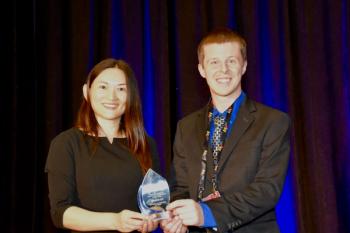
FT-IR Study Reveals How C=O Stretching Vibrations in Benzeneacetamide Interact With Other Molecules in Solution
A study investigated the interactions of benzeneacetamide with other molecules in organic solvents by obtaining frequencies of C=O groups in 18 solvents using infrared spectroscopy, and correlated empirical parameters with the frequencies to estimate their contributions in intermolecular interactions, finding that solvent effects on the frequencies of C=O stretching vibrations were significant.
A recent study published in Spectrochimica Acta Part A: Molecular and Biomolecular Spectroscopy has investigated the interactions between benzeneacetamide and other molecules in various organic solvents (1). The researchers used infrared (IR) spectroscopy to obtain the frequencies of the carbonyl stretching vibration (ν(C=O)) of benzeneacetamide (N-phenylacetamide, C8H9NO) in 18 different solvents.
The study found that solvent effects on the frequencies of the C=O stretching vibrations of benzeneacetamide were evident, with self-association of alkanol leading to an enhancement of the hydrogen bond strength and a red-shift of the ν(C=O) peak. The results also revealed that the ν(C=O) of benzeneacetamide is more sensitive to the acidity of the hydrogen bond donor in the solvent.
In addition to providing insights into the molecular interactions and microstructures in liquid mixtures, the study also correlated the frequencies of carbonyl stretching vibration with empirical parameters of the solvents, such as the acceptor number (AN), the van der Waals interaction parameters (SVW), and the linear solvation energy relationships (LSER). This correlation helped to estimate the contributions of intermolecular interactions.
Acceptor number (AN), van der Waals interaction parameters (SVW), and linear solvation energy relationships (LSER) are all empirical parameters used to study the interactions of molecules in solvents. AND is a measure of a solvent's ability to accept electron pairs from a solute molecule. SVW is a parameter that describes how strongly a solvent interacts with a solute molecule through van der Waals forces. LSER is a method used to quantify the contribution of various types of interactions to the solvation energy of a solute molecule in a solvent. In this study, these parameters were used to estimate the contributions of intermolecular interactions to the frequencies of carbonyl stretching vibrations of benzeneacetamide in different solvents. The results showed that the solvent effects on the frequencies of C=O stretching vibrations of benzeneacetamide were significant.
The findings of this study have significant implications for the pharmaceutical and chemical industries, where understanding the interactions between molecules in solution is crucial for developing new drugs and optimizing chemical processes. The study provides a comprehensive understanding of how different solvents affect the vibrational frequency of the C=O groups in benzeneacetamide, which can be used to inform solvent selection and optimize molecular interactions.
Overall, this study provides important insights into the behavior of benzeneacetamide in solution and has implications for a wide range of industries. Further studies can build upon these findings to gain a more thorough understanding of the complex molecular interactions that underpin chemical processes.
Reference
(1) Xu, L.; Zhang, F. FTIR study on the C = O interactions of benzeneacetamide in solution. Spectrochimica Acta Part A: Mol. Biomol. Spectrosc. 2023, 295, 122601. DOI:
Newsletter
Get essential updates on the latest spectroscopy technologies, regulatory standards, and best practices—subscribe today to Spectroscopy.




